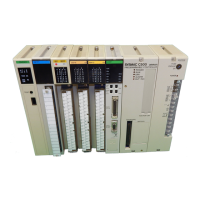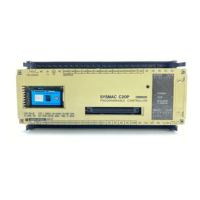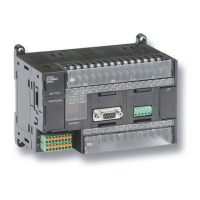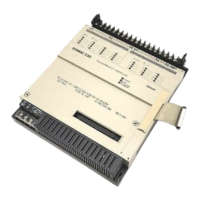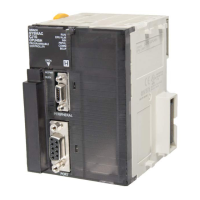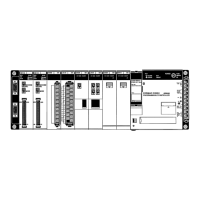Glossary
128
hexadecimal digit. Binary data in memory is thus often expressed in hexadeci-
mal for convenience.
binary-coded decimal A system used to represent numbers so that every four binary bits is numerically
equivalent to one decimal digit.
bit The smallest piece of information that can be represented on a computer. A bit
has the value of either zero or one, corresponding to the electrical signals ON
and OFF. A bit represents one binary digit. Some bits at particular addresses are
allocated to special purposes, such as holding the status of input from external
devices, while other bits are available for general use in programming.
bit address The location in memory where a bit of data is stored. A bit address specifies the
data area and word that is being addressed as well as the number of the bit with-
in the word.
Branching Link Adapter A Link Adapter used to branch connections to Units in a Link System used either
to prevent the entire System from shutting down for an interruption at only one
point in the System or to enable connecting more than two Units in one System
when each Unit provides only one connector.
buffer A temporary storage space for data in a computerized device.
building-block PC A PC that is constructed from individual components, or “building blocks.” With
building-block PCs, there is no one Unit that is independently identifiable as a
PC. The PC is rather a functional assembly of Units.
bus A communications path used to pass data between any of the Units connected
to it.
bus link A data link that passes data between two Units across a bus.
byte A unit of data equivalent to 8 bits, i.e., half a word.
central processing unit A device that is capable of storing programs and data, and executing the instruc-
tions contained in the programs. In a PC System, the central processing unit ex-
ecutes the program, processes I/O signals, communicates with external de-
vices, etc.
channel See word.
character code A numeric (usually binary) code used to represent an alphanumeric character.
checksum A sum transmitted with a data pack in communications. The checksum can be
recalculated from the received data to confirm that the data in the transmission
has not been corrupted.
CIM Computer integrated manufacturing; a process where one or more computers
are used to control and integrate manufacturing processes.
CIO Area A memory area used to control I/O and to store and manipulate data. CIO Area
addresses do not require prefixes.
combined Link System A control system that includes more than one of the following systems: Remote
I/O System, SYSMAC Link System, Host Link System, or SYSMAC NET Link
System.
common (link) parameter table A table of settings in a SYSMAC LINK System that specifies what words are to
be used in the data links for all PCs in the SYSMAC LINK System. See refresh
parameter table.
